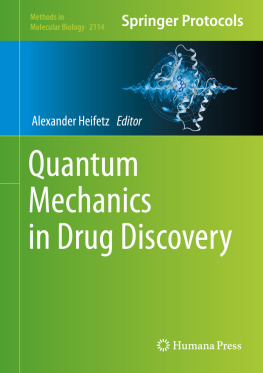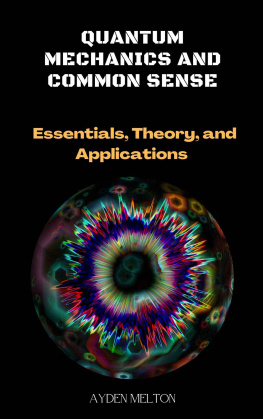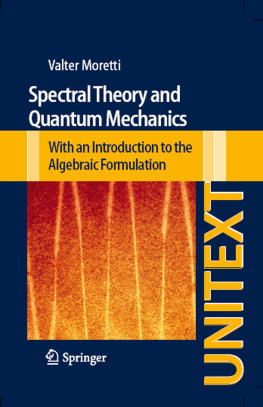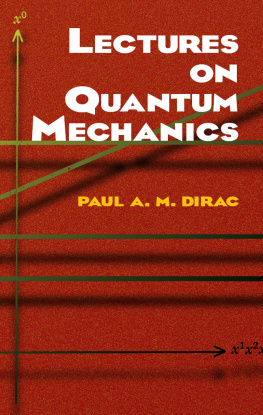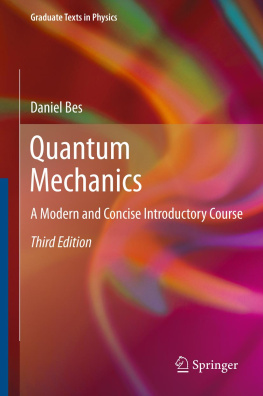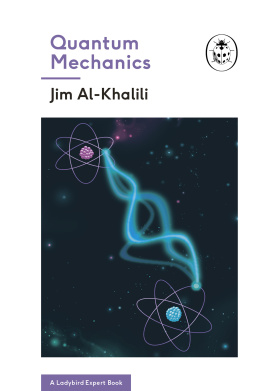Alexander Heifetz - Quantum Mechanics in Drug Discovery
Here you can read online Alexander Heifetz - Quantum Mechanics in Drug Discovery full text of the book (entire story) in english for free. Download pdf and epub, get meaning, cover and reviews about this ebook. year: 2020, publisher: Human, genre: Art. Description of the work, (preface) as well as reviews are available. Best literature library LitArk.com created for fans of good reading and offers a wide selection of genres:
Romance novel
Science fiction
Adventure
Detective
Science
History
Home and family
Prose
Art
Politics
Computer
Non-fiction
Religion
Business
Children
Humor
Choose a favorite category and find really read worthwhile books. Enjoy immersion in the world of imagination, feel the emotions of the characters or learn something new for yourself, make an fascinating discovery.
- Book:Quantum Mechanics in Drug Discovery
- Author:
- Publisher:Human
- Genre:
- Year:2020
- Rating:4 / 5
- Favourites:Add to favourites
- Your mark:
- 80
- 1
- 2
- 3
- 4
- 5
Quantum Mechanics in Drug Discovery: summary, description and annotation
We offer to read an annotation, description, summary or preface (depends on what the author of the book "Quantum Mechanics in Drug Discovery" wrote himself). If you haven't found the necessary information about the book — write in the comments, we will try to find it.
Quantum Mechanics in Drug Discovery — read online for free the complete book (whole text) full work
Below is the text of the book, divided by pages. System saving the place of the last page read, allows you to conveniently read the book "Quantum Mechanics in Drug Discovery" online for free, without having to search again every time where you left off. Put a bookmark, and you can go to the page where you finished reading at any time.
Font size:
Interval:
Bookmark:
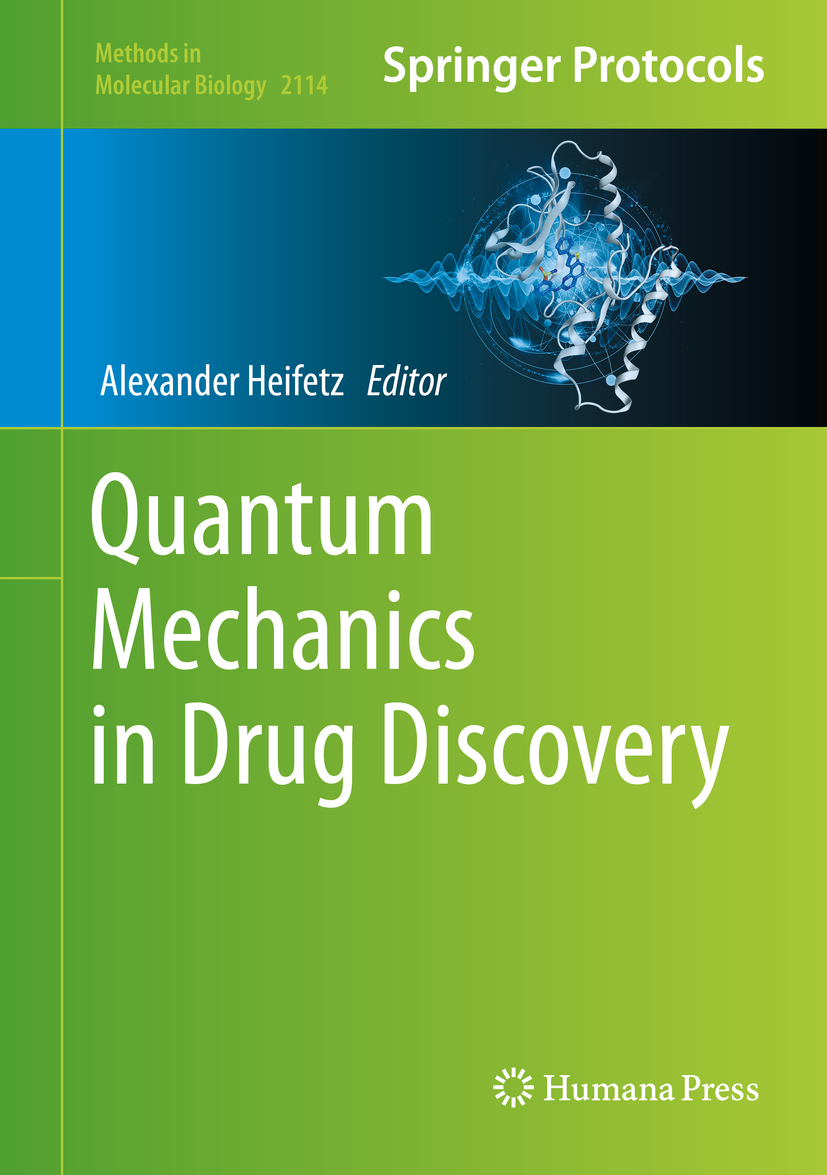
For further volumes: http://www.springer.com/series/7651
For over 35 years, biological scientists have come to rely on the research protocols and methodologies in the critically acclaimedMethods in Molecular Biologyseries. The series was the first to introduce the step-by-step protocols approach that has become the standard in all biomedical protocol publishing. Each protocol is provided in readily-reproducible step-by-step fashion, opening with an introductory overview, a list of the materials and reagents needed to complete the experiment, and followed by a detailed procedure that is supported with a helpful notes section offering tips and tricks of the trade as well as troubleshooting advice. These hallmark features were introduced by series editor Dr. John Walker and constitute the key ingredient in each and every volume of theMethods in Molecular Biologyseries. Tested and trusted, comprehensive and reliable, all protocols from the series are indexed in PubMed.

This Humana imprint is published by the registered company Springer Science+Business Media, LLC, part of Springer Nature.
The registered company address is: 1 New York Plaza, New York, NY 10004, U.S.A.
The application of quantum mechanical (QM) methods in drug discovery is becoming increasingly popular. This is largely a consequence of significant improvements in computing power/speed, which have led to advances in QM algorithm development and new applications of QM methods. Such methods are now routinely applied to many computer-aided drug discovery problems, including characterizing proteinwaterligand and proteinprotein interactions, providing estimates of binding affinities, determining ligand energies and bioactive conformations, refinement of molecular geometries, scoring docked proteinligand poses, describing molecular similarity, structureactivity relationship (SAR) analysis, and ADMET prediction. QM applications are rapidly replacing classical molecular mechanics (MM) methods because there is no need to use MM approximations when you can perform QM calculations with much higher accuracy and similar speed.

The most intelligent picture ever taken
Participants of the 5th Solvay Conference on Quantum Mechanics, 1927; 17 of the 29 attendees were or became Nobel Prize winners, including Marie Curie, who, alone among them, had won Nobel Prizes in two separate scientific disciplines.
From back to front and from left to right: Auguste Piccard, mile Henriot, Paul Ehrenfest, douard Herzen, Thophile de Donder, Erwin Schrdinger, Jules-mile Verschaffelt, Wolfgang Pauli, Werner Heisenberg, Ralph Howard Fowler, Lon Brillouin, Peter Debye, Martin Knudsen, William Lawrence Bragg, Hendrik Anthony Kramers, Paul Dirac, Arthur Compton, Louis de Broglie, Max Born, Niels Bohr, Irving Langmuir, Max Planck, Marie Skodowska Curie, Hendrik Lorentz, Albert Einstein, Paul Langevin, Charles Eugne Guye, Charles Thomson Rees Wilson, Owen Willans Richardson.
Font size:
Interval:
Bookmark:
Similar books «Quantum Mechanics in Drug Discovery»
Look at similar books to Quantum Mechanics in Drug Discovery. We have selected literature similar in name and meaning in the hope of providing readers with more options to find new, interesting, not yet read works.
Discussion, reviews of the book Quantum Mechanics in Drug Discovery and just readers' own opinions. Leave your comments, write what you think about the work, its meaning or the main characters. Specify what exactly you liked and what you didn't like, and why you think so.

